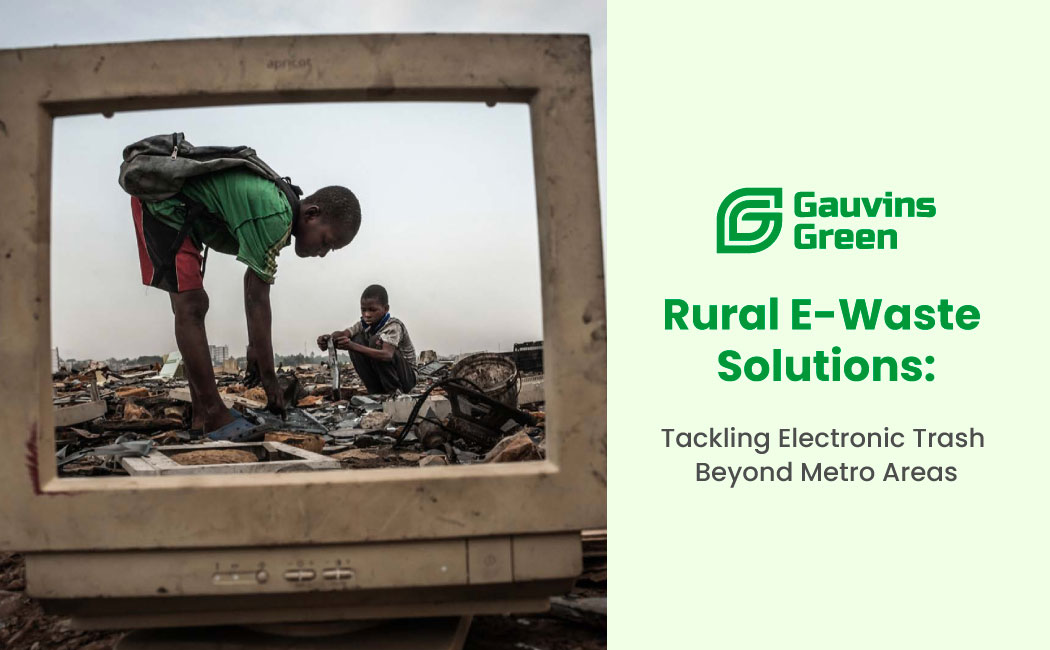|
Getting your Trinity Audio player ready...
|
In today’s rapidly advancing digital age, the lifecycle of electronic devices is becoming shorter, leading to a significant increase in electronic waste. Implementing an effective electronics recycling initiative is not just beneficial for the environment but also for businesses and communities seeking sustainable practices. Here’s how you can start an electronics recycling program in just five simple steps, turning e-waste to ecosystem benefits.
Table of Contents
ToggleStep 1: Understand the Scope of Your Electronics Waste
Before diving into the world of electronics recycling, it’s crucial to assess the volume and types of e-waste your home, office, or community generates. Identify which electronic devices are most commonly used and disposed of, and categorize them accordingly. This initial assessment will give you a clear picture of the recycling needs and help tailor your recycling methods effectively.
Step 2: Partner with a Certified Electronic Recycler
The success of your recycling initiative largely depends on partnering with the right electronic recycler. Look for a certified recycler who adheres to responsible recycling methods and has a transparent process. Certifications to look for include R2 (Responsible Recycling) or e-Stewards, which ensure that the recycler operates under high environmental standards and adheres to global e-waste recycling program practices.
Step 3: Set Up a Collection Mechanism
Once you’ve partnered with a recycler, the next step is to establish an efficient collection mechanism. This could involve setting up designated collection bins in accessible locations for smaller electronics or scheduling periodic collection drives for larger items. The goal is to make it as easy as possible for individuals to participate in the electronics recycling program.
Step 4: Educate and Engage Your Community
Awareness and participation are key to the success of any recycling initiative. Develop an engaging education campaign highlighting the benefits of electronics recycling, such as preventing harmful chemicals from polluting the environment and recovering valuable materials. Share success stories of how e-waste to ecosystem transformation has positively impacted communities.
Step 5: Monitor, Adapt, and Expand
Finally, continuously monitor the progress of your electronics recycling program. Collect data on participation rates, volumes of e-waste collected, and feedback from participants. Use this information to adapt and improve your initiative. As your program matures, consider expanding it to include more types of electronic waste or to cover a larger geographic area.
Conclusion
Starting an electronics recycling initiative is a commendable step towards environmental sustainability. By following these five simple steps, you can transform e-waste into an ecosystem of opportunities, fostering a culture of recycling and sustainability within your community or organization.
FAQ’s
Why is electronics recycling important?
Electronics recycling plays a crucial role in mitigating environmental pollution by diverting hazardous materials found in e-waste from landfills and reducing the need for new raw materials through recovery and reuse. It helps in conserving natural resources, protecting ecosystem health, and reducing the carbon footprint associated with manufacturing new electronic devices.
How can I find a certified electronic recycler near me?
To find a certified electronic recycler, you can start by checking certifications such as R2 (Responsible Recycling) or e-Stewards on the recycler’s website, which ensure adherence to environmental and safety standards. Additionally, local environmental agencies or e-waste recycling directories online can provide listings of certified recycling facilities in your area.
What types of electronics can be recycled through an electronics recycling program?
An electronics recycling program typically accepts a wide range of electronic devices including but not limited to smartphones, laptops, desktop computers, printers, televisions, and small appliances. Each electronic recycler may have specific guidelines on the types of e-waste they accept, so it’s advisable to check with them directly.
How can individuals and businesses participate in an e-waste recycling program?
Individuals and businesses can participate in an e-waste recycling program by collecting their unused or end-of-life electronic devices and dropping them off at designated recycling points or scheduling a pickup with a certified recycler. Businesses can also host e-waste collection drives and partner with recyclers for bulk disposal. Educating employees and community members about the benefits and methods of electronics recycling can further enhance participation rates.




